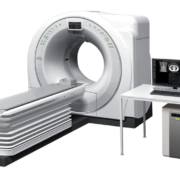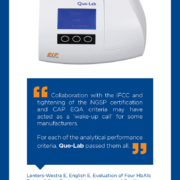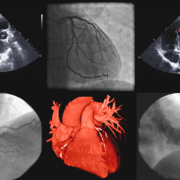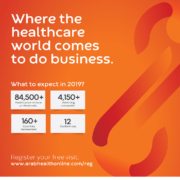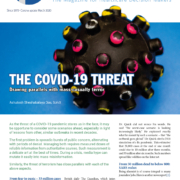Though global maternal mortality has declined by 1.3 percent a year since 1990, the rate continues to remain stubbornly high in certain regions. At present, fewer than one of 50 pregnant women require critical care. However, both maternal and fetal mortality can be high when it is required.
In industrialized countries, the rate of obstetric ICU admissions varies from 50 to over 400 per 100,000 deliveries with an overall case-fatality rate of 2%. In developing countries, fatality in obstetric ICU patients can be 3-5 times higher.
Obstetric disorders in the ICU
Obstetric ICU patients include those with obstetric disorders as well as pregnant patients with medical/surgical disorders. The bulk of patients are admitted to the ICU for obstetric disorders. In general, obstetricians are aware of all obstetric patients in hospital, whether they have a medical or obstetric problem.
There are several obstetric conditions which can require ICU admission. The most common are hemorrhage and hypertensive disorders, above all pre-eclampsia toxemia (PET) and eclampsia. In industrialiZed Western countries, these typically account for 30-35% and 20% of admissions to the ICU.
Hemorrhage leading cause of mortality, ICU admission
Obstetric hemorrhage is either antepartum or postpartum, and remains the leading cause of maternal mortality. Antepartum hemorrhage occurs in 5 percent of pregnant women, and in the bulk of cases carries no risk to the mother or fetus. Major causes involve the placenta and uterine rupture.
Postpartum hemorrhage (PPH) is the single most frequent indication for ICU admission, and involves major blood loss, regardless of the mode of birth. Though there is no universally accepted definition, it typically means more than a half litre of blood loss within 24 hours. In about two out of three cases, PPH is due to failure of uterine contraction after delivery, with most of the rest caused by placental retention. Genital trauma, due to laceration of the vagina or cervix because of instrument delivery, is also increasingly implicated in PPH.
Patient management of obstetric hemorrhage depends on identifying the cause and whether or not delivery has occurred. In PPH, management is aggressive, beginning with administration of oxytocin, emptying of the bladder and massage of the uterus. The care team also begins intravenous prostaglandin therapy, coupled with uterine tamponade via balloon compression or packing. If bleeding persists, surgical intervention is indicated: arterial ligation, suture, Cesarean hysterectomy or uterine artery embolization. Should bleeding continue, recombinant factor VIIa is administered and repeated, if there is no response.
Hypertensive disorders
Pre-eclampsia toxemia (PET) occurs in 2 to 3 percent of all pregnancies after 20 weeks of gestation, and is classified as mild, moderate or severe. Its pathogenesis results from abnormal placenta formation, and it is characterized by impaired organ perfusion due to impaired vasodilation and placental ischemia. As pregnancy progresses, the ischemia worsens. This makes the mother hypertensive, with a risk of renal dysfunction.
Severe PET is associated with significant morbidity and mortality, both for the mother and fetus. It requires one or more of the following indicators: hypertension (BP over 160 systolic or 110 diastolic), proteinuria higher than 5 grams per 24 hours or oliguria below 400 ml per 24 hours, along with cerebral irritability, epigastric pain, and pulmonary edema.
PET usually resolves following delivery of the fetus but may manifest postpartum. A variety of antihypertensive agents, including hydralazine, labetalol, sodium nitroprusside, alpha blockers, calcium channel blockers and methyl dopa, have been advocated in PET. Hydralazine and labetalol are the most widely used in the critical care setting. Magnesium is usually co-administered to provide vasodilatation and prevent seizures. Care should be taken with fluid resuscitation because of the risk of pulmonary edema.
Eclampsia is an extreme complication of PET, and is marked by the occurrence of convulsions and seizures, 40% of which occur following delivery. The seizures tend to be self-limiting, with a very rare incidence of status epilepticus. Though the mortality from eclampsia has been high in the past, death is now uncommon. Common causes of mortality are hepatic complications, including hepatic failure, hemorrhage, or infarction.
Other challenges of pregnancy
Peripartum cardiomyopathy is another challenging condition during pregnancy, albeit of unknown cause. It is one of the leading causes of maternal death, with mortality as high as 25-50%. It can occur from the final month of pregnancy up to 5 months after delivery.
Other conditions unique to pregnancy include HELPP syndrome (hemolysis, elevated liver enzymes and low platelets), placental disorders (abruption, previa or retention), amniotic fluid embolism and chorioamnionitis, and acute fatty liver.
Changing epidemiology
The epidemiology of obstetrics in the ICU has changed dramatically since the past decade. Obstetric conditions such as thrombocytopenic purpura of pregnancy, which were rare in the past, are now being diagnosed more frequently. Massive hemorrhage from adherent placenta is increasing due to the growing number of pregnant women bearing scars from previous cesarean sections (CS). Uterine rupture during labour is also sometimes associated with previous CS. Another condition is ovarian hyper-stimulation syndrome, which is not uncommon any more due to the sharp growth in the availability of assisted reproduction techniques.
There are now many older mothers with pre-existing disorders and chronic medical conditions, some of which can be in an advanced stage. Typical co-morbidities today including essential hypertension, Type 2 diabetes and coronary heart disease. Obesity is also a major concern, which poses numerous challenges for managing pregnant patients in the ICU.
Impact on multiple physiological systems
Pregnancy affects several physiological systems – among them, the cardiovascular, respiratory, renal, hematologic and endocrine. These tax a patient’s reserves and often compromise responses needed to combat a disease state during pregnancy and the peripartum period.
Pregnancy’s impact on physiological systems is twofold: first, by worsening pre-existing conditions, and second, by heightening susceptibility.
For example, cardiovascular conditions which can deteriorate significantly in pregnancy include aortal coarctation, primary pulmonary hypertension and valvular disease; congenital heart disease is another such condition. Cardiovascular issues are also important since that shortness of breath is a very common symptom in pregnancy. When this occurs, clinicians must distinguish the dyspnea resulting from underlying medical disorders versus that caused by normal physiologic changes in pregnancy. The latter include anemia, upward displacement of the diaphragm, and respiratory alkalosis.
One of the most confounding cardiovascular challenges is associated with PET. Aside from hypertension, patients also show increased systemic vascular resistance and reduced intravascular volume, which cause a reduction in cardiac output as disease severity progresses. In such cases, left ventricular function can deteriorate leading to a risk of pulmonary edema after fluid resuscitation.
On the other side, pregnant women also face an increase in risk for a gamut of infections ranging from varicella pneumonia and urinary tract infections to malaria and hepatitis.
In the respiratory system, the impact of pregnancy on cystic fibrosis is well known. However, pregnant women also face a concurrent increase in susceptibility to venous embolisms and pulmonary thromboembolism.
This kind of dual impact is also faced by the renal, endocrinal and neurological systems. Pregnancy worsens renal insufficiency and glomerulonephritis and enhances susceptibility to acute renal failure.
In the endocrinal system, it worsens diabetes and prolactinoma and increases susceptibility to gestational diabetes.
The list of neurological conditions which deteriorate during pregnancy is especially large, and includes epilepsy, myasthena gravis and multiple sclerosis, while an increase in susceptibility is seen with intracranial hemorrhage. Another complicating factor is that up to half of obstetric critical care patients have some form of neurological compromise. In most circumstances, this is the result of their admission diagnosis (that is, pre-eclampsia or obstetric hemorrhage), rather than as the precipitant of their ICU admission.
Two patients in one
As a result of the above factors, obstetric critical care represents a major challenge for medical professionals. Obstetricians need to master both maternal and fetal physiology, and avoid any potentially adverse effects on a fetus of diagnostic and therapeutic interventions given as part of care for the mother. Indeed, it is a common statement that obstetricians treat two patients, the mother and the fetus. They must also assess two separate risks – maternal and fetal – from continuing with a pregnancy and decide if termination of the pregnancy improves the outcome for the mother. This is a very charged challenge since a fetus is generally robust despite maternal illness, and it has been demonstrated that pregnancy-induced critical illnesses are resolved by delivery of the fetus.
Mastering general principles
Obstetric ICU practice consists of firstly mastering general principles such as drug safety, ventilation and management of patient airways, monitoring of the fetus, muscle relaxation and sedation, cardiovascular support, thromboprophylaxis, as well as radiology and ethical issues. This is followed by the acquisition of expertise in the management of obstetric and medical conditions.
Critical care interventions for an obstetric patient are similar to those for the non-pregnant patient. However, it is often necessary to adjust physiologic targets for metabolic, pulmonary, and hemodynamic control.
The need for teamwork
Given the complexity and time-sensitiveness of critical care medicine, teamwork skills are essential. Typically, the care team for an obstetric patient at an ICU is multidisciplinary, consisting of the intensivist, obstetrician, anesthesiologist, maternal-fetal medicine specialist, the neonatologist and the ICU nurses. This team needs to operate effectively alongside regular staff.
Although clinicians working in critical care environments are generally highly trained and competent, they have traditionally not learned how to work well as part of a team. Remedying this has become a priority on both sides of the Atlantic.
As part of a paper on standards of care, the European Board and College of Obstetrics and Gynaecology (EBCOG) explicitly recommends “multidisciplinary, high-quality teamwork” as being “essential” in obstetric medical care and urges healthcare providers to ensure that maternity services have adequate facilities, expertise, capacity and back-up for “timely transfer to intensive care.” EBCOG also seeks to give substance to such a mission. It urges a system of “clear referral paths” to enable pregnant women requiring additional care to be managed and treated by the appropriate specialist teams when problems are identified. One of its most interesting recommendations is for development and routine use of an obstetric ‘early warning chart’ to help in the timely recognition, treatment and referral of women developing a critical illness.
Teamwork is also seen as being a priority in the US, where the Joint Commission pointed to failures in teamwork and communication as among the leading causes of adverse obstetric events. Although obstetric clinicians seem aware of deficiencies in teamwork, their perceptions of teamwork differ based upon their role. In a survey by Johns Hopkins University of 44 hospitals across the US, the majority had fewer than half of respondents reporting ‘good teamwork’ in their labour and delivery units.

